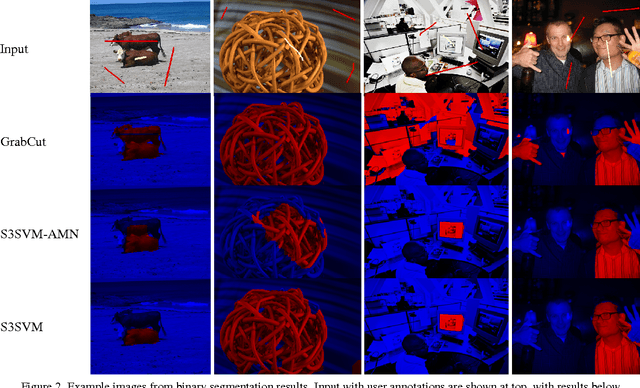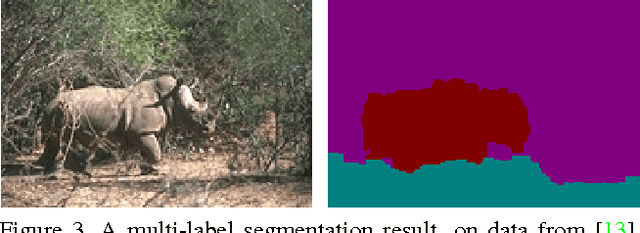Alexander Fix
Polarization-resolved imaging improves eye tracking
Nov 06, 2025Abstract:Polarization-resolved near-infrared imaging adds a useful optical contrast mechanism to eye tracking by measuring the polarization state of light reflected by ocular tissues in addition to its intensity. In this paper we demonstrate how this contrast can be used to enable eye tracking. Specifically, we demonstrate that a polarization-enabled eye tracking (PET) system composed of a polarization--filter--array camera paired with a linearly polarized near-infrared illuminator can reveal trackable features across the sclera and gaze-informative patterns on the cornea, largely absent in intensity-only images. Across a cohort of 346 participants, convolutional neural network based machine learning models trained on data from PET reduced the median 95th-percentile absolute gaze error by 10--16\% relative to capacity-matched intensity baselines under nominal conditions and in the presence of eyelid occlusions, eye-relief changes, and pupil-size variation. These results link light--tissue polarization effects to practical gains in human--computer interaction and position PET as a simple, robust sensing modality for future wearable devices.
Digitally Prototype Your Eye Tracker: Simulating Hardware Performance using 3D Synthetic Data
Mar 20, 2025



Abstract:Eye tracking (ET) is a key enabler for Augmented and Virtual Reality (AR/VR). Prototyping new ET hardware requires assessing the impact of hardware choices on eye tracking performance. This task is compounded by the high cost of obtaining data from sufficiently many variations of real hardware, especially for machine learning, which requires large training datasets. We propose a method for end-to-end evaluation of how hardware changes impact machine learning-based ET performance using only synthetic data. We utilize a dataset of real 3D eyes, reconstructed from light dome data using neural radiance fields (NeRF), to synthesize captured eyes from novel viewpoints and camera parameters. Using this framework, we demonstrate that we can predict the relative performance across various hardware configurations, accounting for variations in sensor noise, illumination brightness, and optical blur. We also compare our simulator with the publicly available eye tracking dataset from the Project Aria glasses, demonstrating a strong correlation with real-world performance. Finally, we present a first-of-its-kind analysis in which we vary ET camera positions, evaluating ET performance ranging from on-axis direct views of the eye to peripheral views on the frame. Such an analysis would have previously required manufacturing physical devices to capture evaluation data. In short, our method enables faster prototyping of ET hardware.
Deep Domain Adaptation: A Sim2Real Neural Approach for Improving Eye-Tracking Systems
Mar 23, 2024Abstract:Eye image segmentation is a critical step in eye tracking that has great influence over the final gaze estimate. Segmentation models trained using supervised machine learning can excel at this task, their effectiveness is determined by the degree of overlap between the narrow distributions of image properties defined by the target dataset and highly specific training datasets, of which there are few. Attempts to broaden the distribution of existing eye image datasets through the inclusion of synthetic eye images have found that a model trained on synthetic images will often fail to generalize back to real-world eye images. In remedy, we use dimensionality-reduction techniques to measure the overlap between the target eye images and synthetic training data, and to prune the training dataset in a manner that maximizes distribution overlap. We demonstrate that our methods result in robust, improved performance when tackling the discrepancy between simulation and real-world data samples.
Structured learning of sum-of-submodular higher order energy functions
Oct 01, 2013


Abstract:Submodular functions can be exactly minimized in polynomial time, and the special case that graph cuts solve with max flow \cite{KZ:PAMI04} has had significant impact in computer vision \cite{BVZ:PAMI01,Kwatra:SIGGRAPH03,Rother:GrabCut04}. In this paper we address the important class of sum-of-submodular (SoS) functions \cite{Arora:ECCV12,Kolmogorov:DAM12}, which can be efficiently minimized via a variant of max flow called submodular flow \cite{Edmonds:ADM77}. SoS functions can naturally express higher order priors involving, e.g., local image patches; however, it is difficult to fully exploit their expressive power because they have so many parameters. Rather than trying to formulate existing higher order priors as an SoS function, we take a discriminative learning approach, effectively searching the space of SoS functions for a higher order prior that performs well on our training set. We adopt a structural SVM approach \cite{Joachims/etal/09a,Tsochantaridis/etal/04} and formulate the training problem in terms of quadratic programming; as a result we can efficiently search the space of SoS priors via an extended cutting-plane algorithm. We also show how the state-of-the-art max flow method for vision problems \cite{Goldberg:ESA11} can be modified to efficiently solve the submodular flow problem. Experimental comparisons are made against the OpenCV implementation of the GrabCut interactive segmentation technique \cite{Rother:GrabCut04}, which uses hand-tuned parameters instead of machine learning. On a standard dataset \cite{Gulshan:CVPR10} our method learns higher order priors with hundreds of parameter values, and produces significantly better segmentations. While our focus is on binary labeling problems, we show that our techniques can be naturally generalized to handle more than two labels.
 Add to Chrome
Add to Chrome Add to Firefox
Add to Firefox Add to Edge
Add to Edge